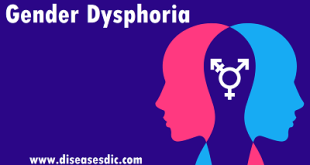What is Glandular Fever?
Glandular fever is an infection caused by the Epstein Barr virus (EBV). It is also called Infectious Mononucleosis and sometimes the ‘kissing disease’. It is an infectious disease that is spread by close person-to-person contact. It causes symptoms similar to influenza (the flu) that vary in severity and can persist for several weeks or longer.
Almost anyone, at any age, can catch glandular fever. However, it most commonly occurs in teenagers and young adults. Studies suggest the infection occurs slightly more often in males than in females.
Pathophysiology
Epstein-Barr virus (EBV) is transmitted via intimate contact with body secretions, primarily oropharyngeal secretions and to a lesser degree through genital secretions. It infects the B cells in the oropharyngeal epithelium; after acute infection the virus has been detected in oro-pharyngeal secretions for up to 32 weeks and may persist for decades. On rare occasion, EBV is spread via blood transfusion and organ transplantation.
Epstein-Barr virus infection of B lymphocytes results in a humoral and cellular response to the virus. The humoral immune response directed against EBV structural proteins is the basis for the test used to diagnose EBV infectious mononucleosis, but the T-lymphocyte cellular response is critical in determining the clinical expression of EBV infection. Natural killer (NK) cells and predominantly CD8+ cytotoxic T cells control proliferating B lymphocytes infected with EBV.
Ineffective T-cell response may cause excessive and uncontrolled B-cell proliferation, resulting in B-lymphocyte malignancies (eg, B-cell lymphomas).
The immune response to EBV infection is fever, which occurs because of cytokine release consequent to B-lymphocyte invasion by EBV. Lymphocytosis observed in the reticuloendothelial system (RES) is caused by a proliferation of EBV-infected B lymphocytes and similar proliferation in the lymphatic tissue of the oropharynx causes pharyngitis.
What causes glandular fever?
Glandular fever is caused by the Epstein-Barr virus (EBV). This virus is found in the saliva of infected people and can be spread through:
- kissing – glandular fever is often referred to as the “kissing disease”
- exposure to coughs and sneezes
- sharing eating and drinking utensils, such as cups, glasses and unwashed cutlery
EBV may be found in the saliva of someone who has had glandular fever for several months after their symptoms pass, and some people may continue to have the virus in their saliva on and off for years.
If you have EBV, it’s a good idea to take steps to avoid infecting others while you are ill, such as not kissing other people, but there’s no need no need to avoid all contact with others as the chances of passing on the infection are generally low.
Risk factors
People more likely to catch glandular fever include:
- Adolescents
- Those sharing food and drinking utensils with others
- People in close contact with someone who has infectious mononucleosis
- People with a weakened immune system
- People with HIV
What are the symptoms of glandular fever?
One or more of the following symptoms commonly occur for about a week or so. Symptoms then usually gradually settle over another week.
- Sore throat. Although this may be mild, your throat is usually very sore, red and swollen. Glandular fever is typically suspected when a tonsillitis is severe and lasts longer than usual. Swallowing is often painful and saliva may pool in your mouth.
- Swollen glands. As your body’s immune system fights off the virus it causes the lymph glands to swell. Any lymph gland in the body can be affected. However, the glands in the neck are usually the most prominent. They can become quite large and tender.
- Flu-like symptoms. Like other viral infections, glandular fever often causes a high temperature (fever), muscle aches and headaches. It can make you feel quite unwell.
- Malaise. A feeling of intense tiredness often develops with glandular fever. This is often the last symptom to go.
- Swelling around eyes. About 1 in 5 people with glandular fever become quite puffy and swollen around the eyes. This goes in a short time.
- Spleen. This is an organ under the ribs on the left side of the tummy (abdomen). It is part of the immune system. Like the lymph glands, it swells and can sometimes be felt below the ribs if you have glandular fever. Very occasionally, it causes mild pain in the upper left abdomen.
- No symptoms. Many people become infected with this virus but do not develop symptoms. This is called a subclinical infection. This is more common in children and in those aged over 40 years.
Glandular fever complications
Most people get better with no problems. But sometimes glandular fever may lead to other problems like:
- Mild liver inflammation (hepatitis), which causes yellowing of the skin and whites of the eyes (jaundice)
- Low levels of blood cells called platelets (thrombocytopenia)
- Neurological conditions, such as Guillain-Barré syndrome or Bell’s palsy
Diagnosis
The doctor will discuss your symptoms and will perform a physical examination. This will include an assessment of whether there is:
- Fever
- Redness of the throat and swelling of the tonsils
- Enlargement of the lymph nodes
- Enlargement of the spleen
- A rash (especially on the chest).
As these symptoms are so characteristic of glandular fever they are usually sufficient to make a diagnosis.
Blood tests
- Antibody tests. If there’s a need for additional confirmation, a monospot test may be done to check your blood for antibodies to the Epstein-Barr virus. This screening test gives results within a day. But it may not detect the infection during the first week of the illness. A different antibody test requires a longer result time, but can detect the disease even within the first week of symptoms.
- White blood cell count. Your doctor may use other blood tests to look for an elevated number of white blood cells (lymphocytes) or abnormal-looking lymphocytes. These blood tests won’t confirm mononucleosis, but they may suggest it as a possibility.
Treatment
There is no cure for glandular fever, and some people experience symptoms for 6 monthsTrusted Source or longer.
However, even without treatment, most people find that their symptoms go away within 2–4 weeksTrusted Source, though fatigue can last longer. In fact, studies have found that 9–22% of people continue to experience fatigue for 6 months after developing the infection.
A person can take the following steps to help the body heal:
Rest
A person with glandular fever often feels too tired and unwell to continue with their regular routine, but complete rest is key, especially in the first month after symptoms have appeared.
As the person recovers, light exercise may help them regain muscle strength.
Drink plenty of fluids
This will help prevent dehydration, especially if there is a fever.
A sore throat can make it hard to swallow, but it is important to consume enough fluids.
Pain relief medication
Pain relief medication, such as ibuprofen (Advil) and acetaminophenTrusted Source (Tylenol) are available over-the-counter and online. They may help keep any fever and pain at bay.
Aspirin is not suitableTrusted Source as it can increase the risk of bleeding. Children under 16 should also not use it due to the risk of developing Reye’s syndrome.
Gargling
Gargling with salt water or a solution from a pharmacy may help relieve a sore throat.
Steroids
If the tonsils are very inflamed or breathing is otherwise difficult, a doctor may prescribe a short course of corticosteroids.
Can glandular fever be prevented?
As with other infectious diseases, the spread of glandular fever can be reduced. People who have glandular fever, or those who come into contact with people with glandular fever, should:
- Carefully wash their hands with soap and running water, especially after sneezing and coughing, and before touching other people
- Avoid sharing eating and drinking containers and utensils
- Avoid saliva contact with people who have, or may have, glandular fever (and if you have glandular fever, avoid saliva contact with others)
 Diseases Treatments Dictionary This is complete solution to read all diseases treatments Which covers Prevention, Causes, Symptoms, Medical Terms, Drugs, Prescription, Natural Remedies with cures and Treatments. Most of the common diseases were listed in names, split with categories.
Diseases Treatments Dictionary This is complete solution to read all diseases treatments Which covers Prevention, Causes, Symptoms, Medical Terms, Drugs, Prescription, Natural Remedies with cures and Treatments. Most of the common diseases were listed in names, split with categories.







